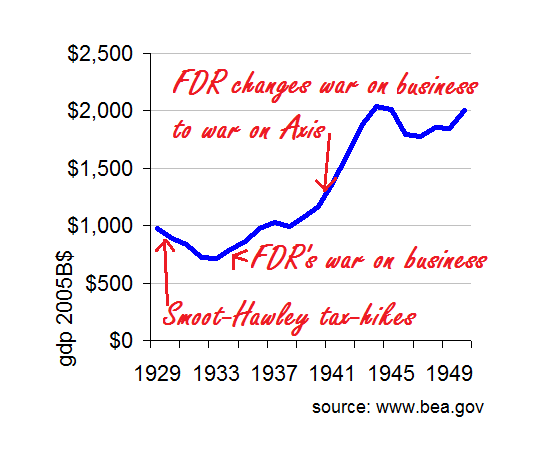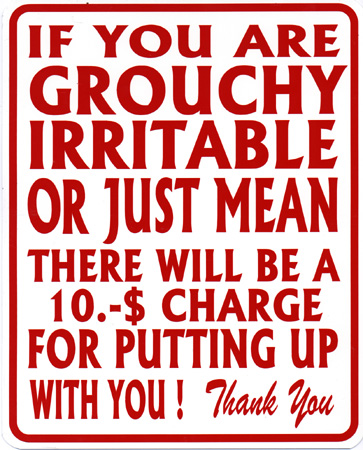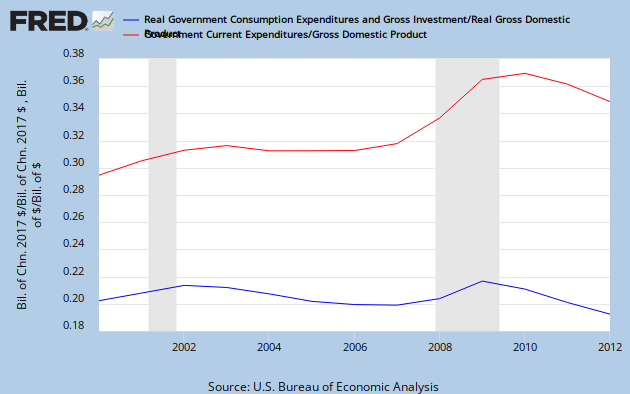expat_panama
Gold Member
- Apr 12, 2011
- 3,899
- 814
- 130
Not all of FDR's policies, just some. FDR's war on business kept GDP at $1T in 2005$ and his changing his attacks over to foreign enemies let the gdp double.The curve is the same. FDR's policies worked...It's easier to think that by not understanding the gdp which is measured in $, not %. Here's the GDP in $ (billions, chained 2005)

The depression began with the huge Smoot-Hawley tax-hikes in 1930 and continued with FDR's war on commerce, and it ended with the war changed to being against the Axis.
LOL! What matters are the numbers, and your "ourfuture.org" can not change the GDP from $ to %. Hey guy, it's all there at the BEA for all to see, and if you have trouble navigating the site let me know and I can show you their GDP records....your image is not from the U.S. Bureau of Economic Analysis. It is a doctored image from La Universidad Ngäbe-Bukle




